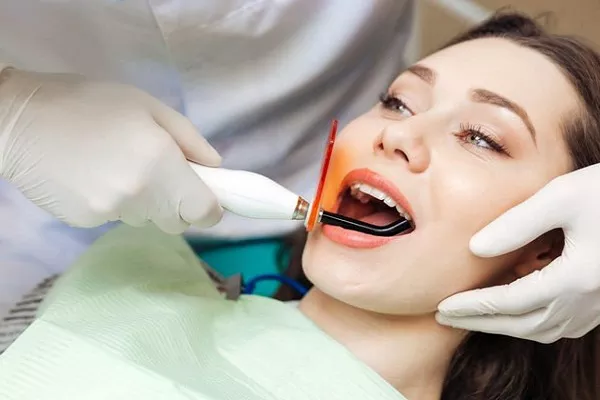Orthodontic treatment often involves the use of various components to straighten teeth, correct bite issues, and achieve a harmonious smile. One of these components is rubber bands, also known as elastics. Rubber bands play a crucial role in many orthodontic treatments, but patients often have questions about where these bands should be placed for optimal effectiveness. In this comprehensive article, we will explore the role of rubber bands in orthodontics, the types of malocclusions they address, and the teeth on which rubber bands are typically placed to achieve the desired results.
Understanding Orthodontic Rubber Bands
Orthodontic rubber bands are small, elastic bands that are used in conjunction with braces to apply specific forces to the teeth and jaws. These bands work by creating tension and helping to move teeth into their correct positions. Rubber bands are an essential tool for orthodontists to correct various malocclusions, or bite issues, and align teeth effectively.
Types of Malocclusions Addressed by Rubber Bands
Rubber bands are versatile and can be used to address a range of malocclusions, including:
Overbite: An overbite occurs when the upper front teeth overlap excessively with the lower front teeth. Rubber bands can help bring the upper and lower teeth into proper alignment.
Underbite: An underbite is the opposite of an overbite, where the lower front teeth protrude beyond the upper front teeth. Rubber bands can assist in aligning the upper and lower jaws in underbite cases.
Crossbite: A crossbite occurs when some of the upper teeth sit inside the lower teeth when the jaws are closed. Rubber bands can help correct the positioning of the upper teeth.
Open Bite: An open bite is characterized by a gap between the upper and lower front teeth when the back teeth are in contact. Rubber bands can help close this gap and improve bite function.
Crowding: Crowding refers to the lack of space in the dental arch to accommodate all the teeth properly. Rubber bands, along with braces, can help create space by gradually shifting teeth.
Spacing: Spacing issues involve gaps or spaces between teeth due to missing or small teeth. Rubber bands can be used to close these spaces by guiding teeth into alignment.
Where Do Rubber Bands Go?
The placement of rubber bands, also known as the “rubber band pattern,” is determined by the specific malocclusion being treated. The orthodontist carefully designs this pattern to apply the necessary forces to move teeth and jaws into their ideal positions. While the precise placement may vary depending on individual needs, here are some common locations for rubber bands:
Class II Malocclusion (Overbite): For patients with an overbite, rubber bands are often placed between the upper and lower arches on both sides of the mouth. They create a pulling force from the upper teeth to the lower teeth, helping to correct the overbite.
Class III Malocclusion (Underbite): In cases of an underbite, rubber bands are typically attached from the upper teeth to the lower teeth, but the pattern may vary depending on the severity of the underbite.
Crossbite: Rubber bands can be used to correct a crossbite by connecting the upper and lower teeth on one side of the mouth, pulling the affected teeth into their proper positions.
Open Bite: For open bite correction, rubber bands are often applied vertically from the upper to the lower arch on the sides where the open bite is present.
Crowding and Spacing: In cases of crowding or spacing issues, rubber bands may be used in various patterns to align individual teeth or close gaps between teeth.
Other Custom Patterns: Orthodontists may create custom rubber band patterns to address specific bite or alignment issues unique to each patient’s treatment plan.
Orthodontic Rubber Band Care
Proper care and compliance with wearing rubber bands are essential for the success of orthodontic treatment. Here are some guidelines:
Consistency: Follow your orthodontist’s instructions on when and how to wear rubber bands consistently. Consistency is crucial for achieving the desired results.
Wear Time: Rubber bands are typically worn full-time, including during meals and while sleeping, unless otherwise advised by your orthodontist.
Changing Bands: Change your rubber bands as instructed. Over time, they can lose their elasticity and effectiveness.
Oral Hygiene: Maintain excellent oral hygiene by brushing and flossing regularly, as rubber bands can trap food particles.
Carry Spares: Always have spare rubber bands on hand in case one breaks or becomes loose.
Contact Your Orthodontist: If you experience any issues or discomfort related to your rubber bands, contact your orthodontist promptly.
Conclusion
Orthodontic rubber bands are a vital component of many orthodontic treatment plans. They play a crucial role in correcting malocclusions, aligning teeth, and achieving a harmonious smile.The specific placement of rubber bands, known as the rubber band pattern, is carefully designed by orthodontists to address individual patient needs.
To ensure the success of your orthodontic treatment, it’s essential to follow your orthodontist’s instructions regarding the wear time, changing of bands, and overall care. By working closely with your orthodontic team and adhering to their recommendations, you can look forward to achieving a beautifully aligned smile and improved bite function.
Related Topics:































